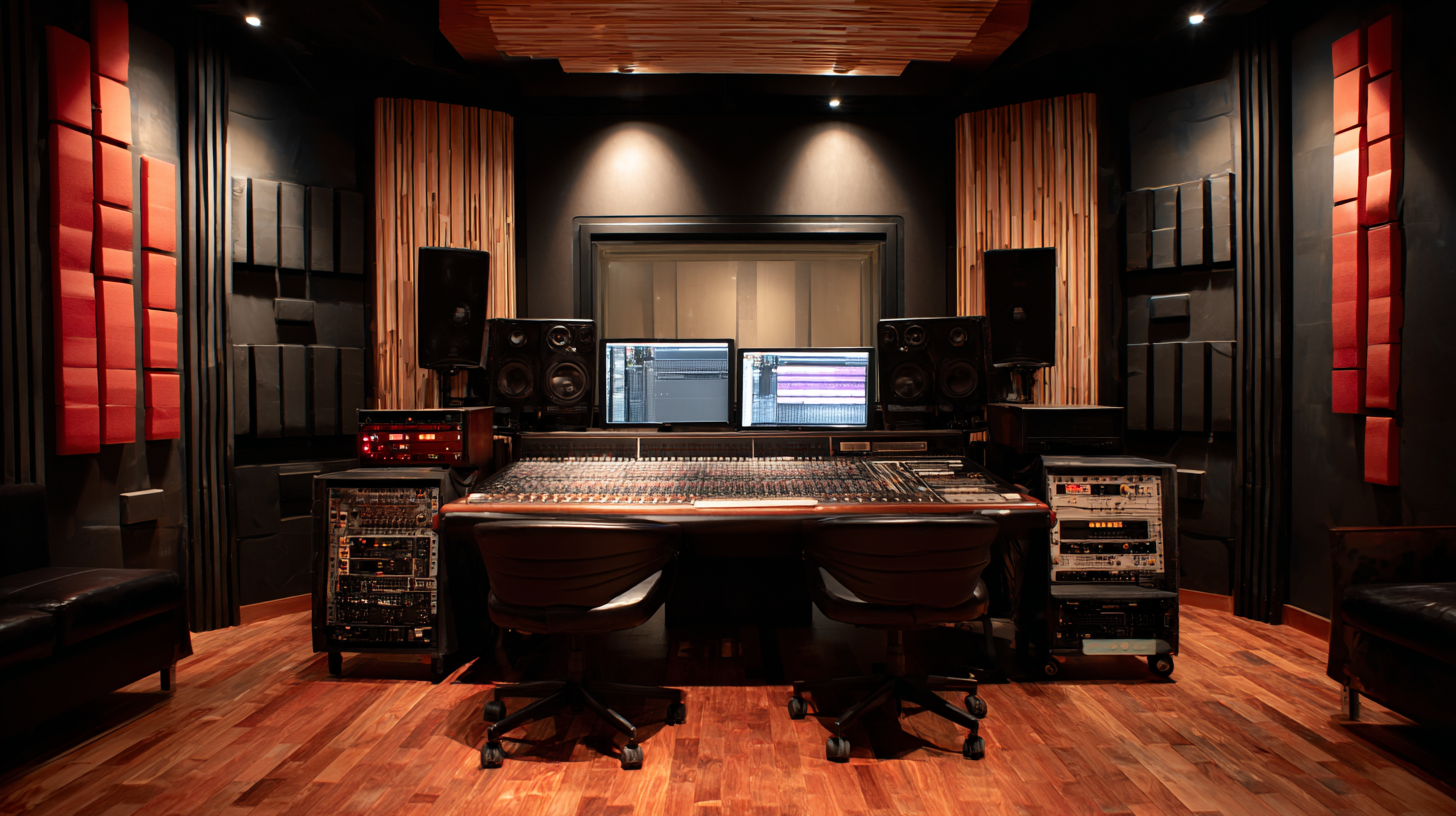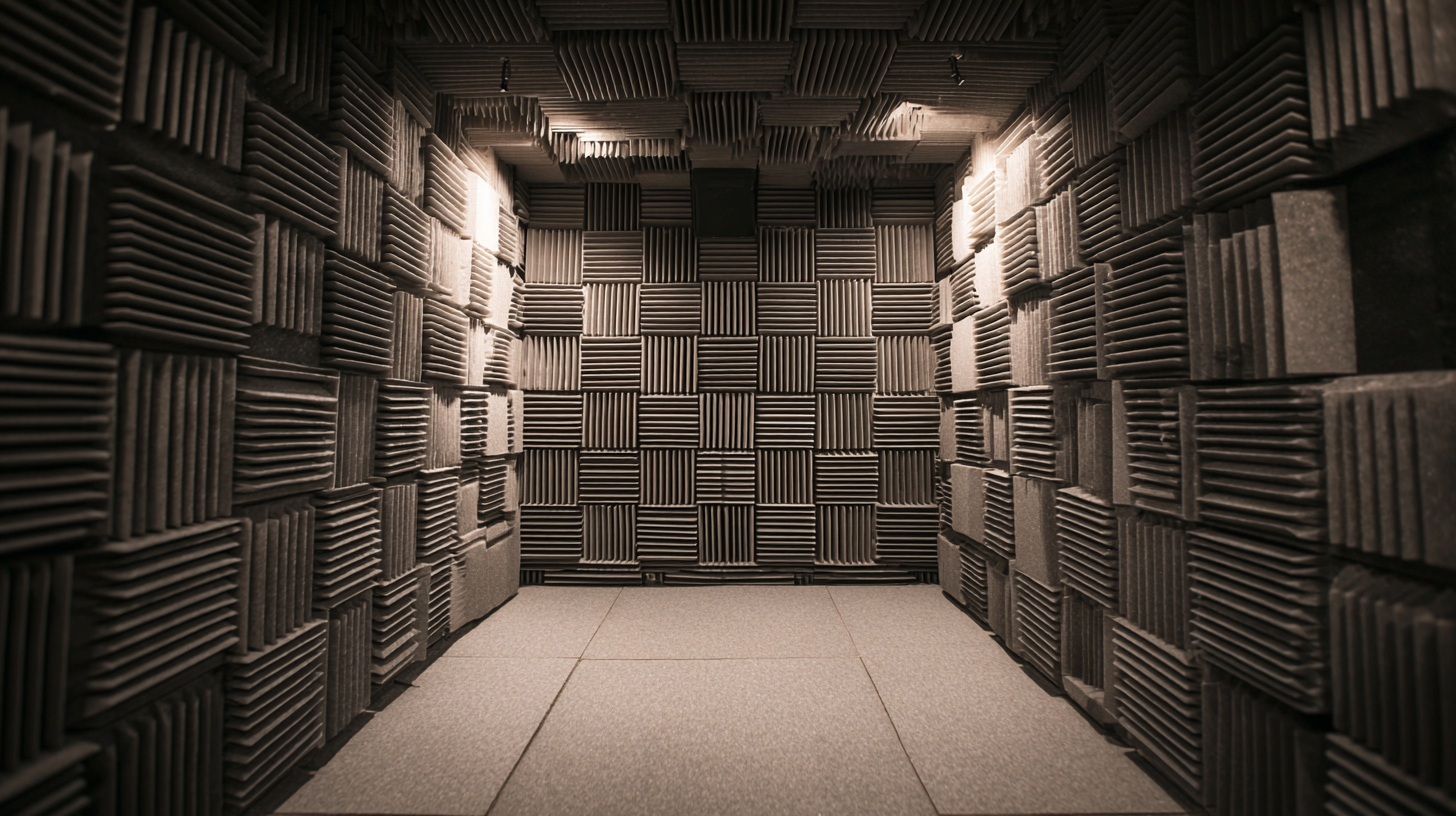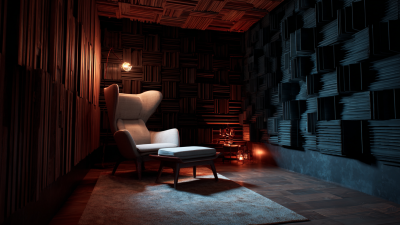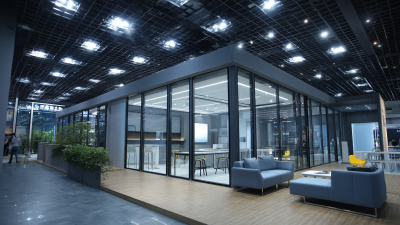The Ultimate Guide to Using Soundproof Panels for a Quieter Home Environment
In an increasingly noisy world, achieving a quieter home environment has become essential for both mental well-being and productivity. Soundproof panels have emerged as a popular solution for homeowners seeking to mitigate unwanted noise, whether from busy streets, loud neighbors, or home-based activities. According to a study by the National Institute of Health, prolonged exposure to high noise levels can contribute to stress-related health issues, making sound insulation a vital consideration for modern living spaces. Moreover, a report from Allied Market Research predicts that the global soundproofing market is expected to reach $100 billion by 2025, highlighting the growing demand for effective acoustic solutions. This guide will delve into the various types of soundproof panels available, their installation methods, and the benefits they bring to creating a serene and comfortable home environment.

Understanding Soundproof Panels: Types and Materials
Soundproof panels are vital in creating a quieter home environment by minimizing unwanted noise. Understanding the different types and materials of soundproof panels can help homeowners choose the right solution for their specific needs. Generally, these panels can be categorized into three primary types: flexible, rigid, and vibration isolation panels.
Flexible panels, often made of soft foam or fabric, effectively absorb sound waves, making them ideal for home theaters and music studios. Rigid panels, typically constructed from materials like plasterboard or MDF, provide more substantial sound blocking capabilities, which can be beneficial for noisy basements or shared walls.
Additionally, vibration isolation panels are designed to reduce noise transmitted through structural elements, such as floors and walls. These panels are essential in environments where mechanical equipment generates significant noise, helping to create a more serene living space. As homeowners become increasingly aware of the impact of noise pollution on their well-being, investing in high-quality soundproofing solutions can enhance comfort and improve the overall quality of life in their homes.
How Soundproof Panels Work: The Science Behind Noise Reduction
Soundproof panels are designed to reduce noise levels by absorbing sound waves, preventing them from bouncing off surfaces and causing echoes. The science behind their effectiveness lies in the materials used, which often include dense fibers or foams structured to trap sound waves. When sound travels through these panels, kinetic energy is transformed into a small amount of heat, diminishing the overall sound energy that passes through. This process significantly lessens the amount of noise that escapes or enters a room, contributing to a quieter home environment.
Tips for maximizing the effectiveness of soundproof panels include choosing the right thickness and density; thicker panels typically absorb lower frequencies better. Placement is crucial as well—installing panels at first reflection points, such as on walls opposite windows or near noisy appliances, can have a substantial impact on sound control. Additionally, consider using a combination of panels and other soundproofing methods, like carpets and curtains, to enhance noise reduction across different frequencies. By understanding the science behind soundproof panels and implementing these tips, you can create a more serene living space.

Choosing the Right Soundproof Panels for Your Space
When looking to enhance your home’s acoustics, selecting the right soundproof panels is crucial. Various types of soundproofing materials exist, each with specific properties suited for different environments. According to a report by the Acoustical Society of America, using soft materials such as foam panels can reduce noise levels by up to 70%, making them ideal for home theaters or music rooms. Conversely, denser materials like mass-loaded vinyl are more effective in blocking sound transmission through walls or ceilings, achieving reductions of around 90% in some cases.
Tip: Before purchasing soundproof panels, conduct a sound analysis of your space. Identify the primary sources of noise and assess the room's dimensions to determine the quantity and type of panels required for optimal sound absorption.
When selecting soundproof panels, also consider aesthetics. Many manufacturers offer customizable options that blend seamlessly with your interior design. Incorporating decorative acoustic panels not only enhances sound quality but also contributes to the overall ambiance of your home. A study by the National Institute of Building Sciences indicates that integrating soundproofing solutions can significantly improve comfort levels and productivity, promoting a more enjoyable living environment.
Tip: Look for panels with a high Noise Reduction Coefficient (NRC) rating, typically above 0.85, to ensure maximum effectiveness in sound absorption.

Installation Tips for Maximizing Soundproofing Effectiveness
When installing soundproof panels to enhance the acoustics in your home, proper placement is crucial for maximizing their effectiveness. Start by identifying the primary sources of noise, such as windows, doors, or walls shared with noisy neighbors. Position your panels strategically in these areas to absorb sound waves and reduce echo. While no space is perfect, targeting high-traffic noise zones will significantly improve your environment's tranquility.
Additionally, consider the materials used for soundproofing. Opt for panels made from dense, high-quality materials that are designed specifically for sound absorption. When possible, layer different types of panels—such as foam, fabric-wrapped, and even mass loaded vinyl—to create a more varied surface that traps sound. Ensure they are securely mounted and cover enough surface area for optimal results. Finally, don’t overlook the importance of aesthetics; selecting visually pleasing designs can enhance your home’s decor while effectively reducing noise levels.
Maintenance and Care for Long-Lasting Soundproof Panels
When investing in soundproof panels for a quieter home environment, understanding their maintenance and care is crucial for ensuring their longevity and effectiveness. According to a study published by the Acoustical Society of America, proper maintenance can prolong the lifespan of soundproofing materials by up to 50%. Regular dusting and cleaning with a damp cloth can prevent the accumulation of dirt and allergens, which may compromise the panel's sound-absorbing properties.
In addition to regular cleaning, re-evaluating the installation of soundproof panels is essential. The National Institute of Building Sciences indicates that panels should be inspected every six months for signs of wear or damage, particularly in high-traffic areas. Touch-ups or repairs to the adhesive used for installation can ensure that the panels remain tightly secured, maximizing their effectiveness.
By following these maintenance tips, homeowners can enjoy a quieter environment while also protecting their investment in soundproofing solutions.
Related Posts
-

Discover the Science Behind Sound Proof Panels: How They Transform Your Space into a Quiet Oasis
-

Creating Your Perfect Soundproof Room for Ultimate Peace and Quiet
-

Exploring the Benefits of Soundproof Rooms for Enhanced Productivity in Home Offices
-

The Ultimate Guide to Choosing the Best Soundproof Wall Panels for Your Home
-

Exploring Innovative Sound Deadening Panels at the 138th China Import and Export Fair 2025
-

Transform Your Space: The Surprising Benefits of Acoustic Ceiling Tiles Explained

